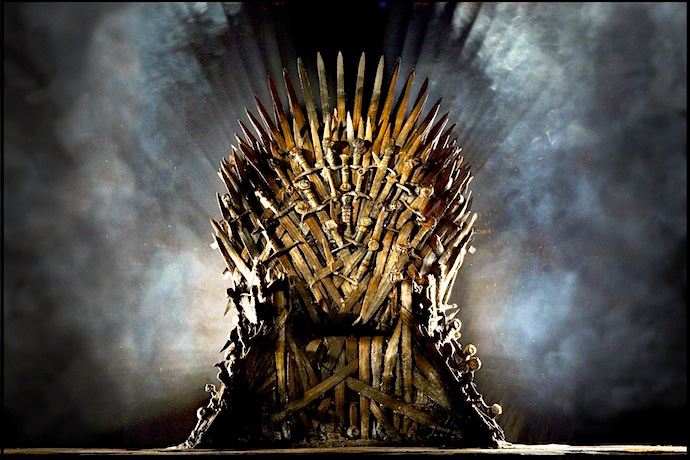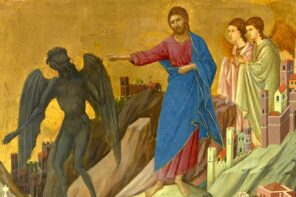A major shakeup at the highest levels in the Russian Orthodox Church is offering new insight into the Moscow-based church’s internal struggles and strategic position towards the West—and oddly no one in the West seems to care.
Metropolitan Hilarion (Alfeyev) has been dismissed from his duties as Metropolitan of Volokolamsk and the head of the Russian Orthodox Church’s powerful Department of External Relations. Previously considered to be the most likely successor to Patriarch Kirill, Metropolitan Hilarion had attempted in recent weeks to distance himself from Patriarch Kirill’s most inflammatory rhetoric with regard to the war in Ukraine.
While no official reason has been given for the move, for his part Metropolitan Hilarion has speculated that it was because he could no longer “fit” given the current geopolitical situation, an allusion to his less than enthusiastic public support for the Russian invasion of Ukraine. But even his explanation might be considered part of the influential bishop’s plan to secure himself a future should Putin and Patriarch Kirill ultimately fall. And he’s still quite well-positioned for such an eventuality.
Metropolitan Hilarion will now become the primate of the Russian Orthodox Dioceses of Budapest and Hungary, an interesting choice indeed considering Russia’s increasing friendliness with Hungary’s far-right leader, Viktor Orban. While on one hand it’s easy to understand the move as an attempt on the part of the Russian Patriarch to exile a powerful and ambitious rival (this is clearly a demotion, make no mistake about it), it’s also noteworthy that he’s being cast out into the court of an important ally. Orban is, after all, arguably Russia’s main ally within the European Union, single-handedly holding back an EU-ban on the importation of Russian oil.
Orban’s Hungary and the Russian Orthodox Church also have an important and powerful ally: American rightwing evangelicals, creating a Christian right axis that unites Eastern Europe, Western Europe, and North America; Orthodox, Catholics, and Protestants. Moreover, let’s not forget, Metropolitan Hilarion will now be a legal resident of the European Union. Moving him to Budapest doesn’t remove him from the center of power, it places him right in the middle of it—whether his Patriarch can see that now or not.
Importantly, Metropolitan Hilarion’s replacement at the Department of External Relations is a man with his feet firmly outside of Russia as well. Metropolitan Anthony (Sevryuk) was until now the head of the Patriarchal Exarchate of Western Europe. Created in 2018, in direct response to the ecclesiastical battle between Moscow and Constantinople in Ukraine, the jurisdiction was created just as the Russian Orthodox Church set up rivals to the Patriarchate of Constantinople in Spain and Portugal and in Southeast Asia.
At the time, Metropolitan Hilarion explicitly stated that with the creation of the new church bodies, the Russian Orthodox Church would “act as if they [i.e. the Patriarchate of Constantinople] do not exist at all,” a sort of declaration of war against the Ecumenical Patriarch and a clear indication of the Russian Orthodox Church’s intention to lead the Orthodox world, both inside and outside the diaspora.
With his accession to the leadership of the Department of External Relations, which carries with it a place in the Holy Synod of the Russian Orthodox Church (the Church’s ruling council of bishops), the 37-year-old Metropolitan Anthony now occupies the place largely considered to be the holding pen for the next Russian Patriarch. The vast majority of his life has been lived in post-Soviet Russia and he’s spent the majority of his career in Western Europe, including in Rome and Paris. One would hope that this would make him a more open, progressive (in relative terms), and cosmopolitan cleric than Patriarch Kirill or Metropolitan Hilarion, both of whom were shaped by the grueling realities and harsh isolation of the Soviet period.
But the very fact of his elevation suggests that this hope might be false. Patriarch Kirill is a man under siege, and the church he leads is one that’s arguably increasingly isolated, finding itself among hostiles in what was once friendly territory. It seems highly unlikely that he would bring into his inner circle a man about whose loyalty he was not 100% certain. Moreover, there is, without a doubt, a diaspora effect—the reality that those living outside the Mother Country are often prone to an increased kind of conservatism, resulting from the experience of living as a “stranger in a strange land.”
What very well might be happening is that in Metropolitan Anthony, Patriarch Kirill and the Russian Orthodox Church have found a true believer who also has an intimate familiarity with “enemy territory.” In short, Metropolitan Anthony’s elevation is proof that the Russian Orthodox Church remains very interested in the West, and probably not in a “getting to know you” kind of way.
Certainly, it’s difficult, in light of everything else going on, to want to pay much attention to the byzantine machinations of the Russian Orthodox Church and the wider Orthodox world. The average Westerner’s lack of familiarity with the structures and roles involved in this medieval game of thrones undoubtedly plays a role in this. But, as has been said before, the Russian Orthodox Church is a tool of the Russian state, an instrument of Russian soft power. Understanding the inner workings of the Russian Church is crucial toward understanding what exactly the Russian Federation is up to.
Today, one of the Russian Church’s most powerful men has been sent into exile and into the heart of the Christian far-right’s global alliance, and one of its young bishops has been called back from the decadent west to be the crown prince. You might want to pay attention to that.





